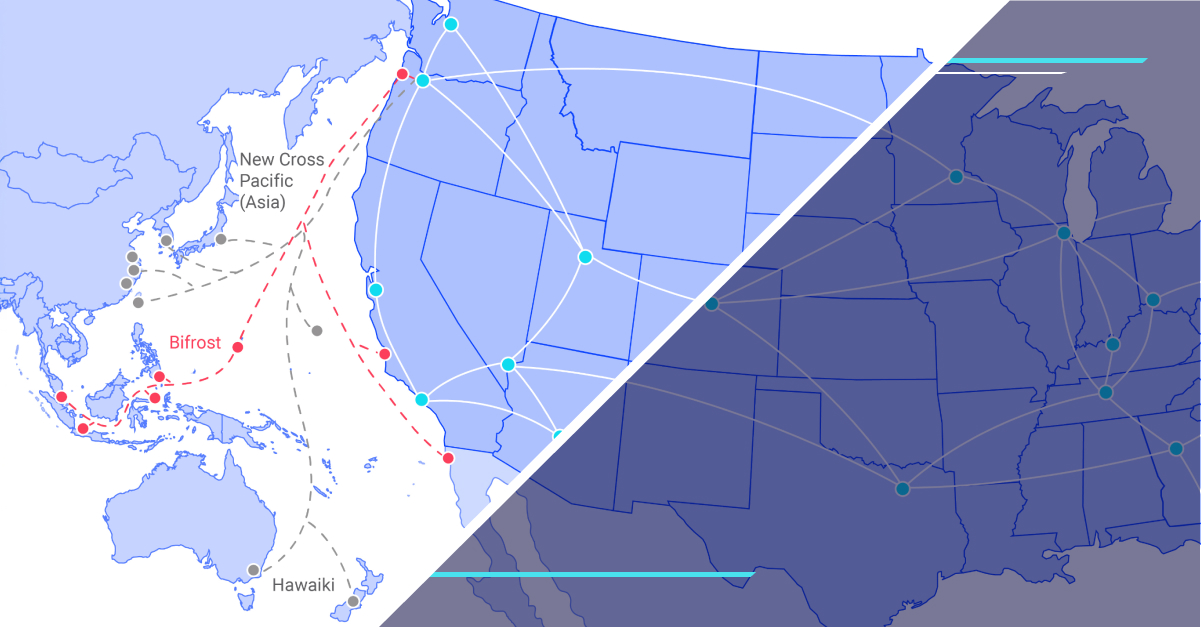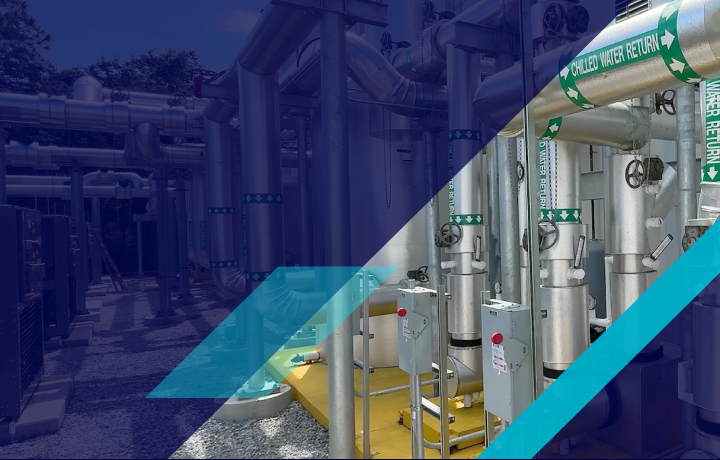From cost center to growth driver: Unlocking business connectivity solutions
Discover how business connectivity solutions, powered by cloud and colocation, are transforming modern enterprises with speed, security, and global scalability.

Business connectivity solutions are the foundation of today's digital-first operations. From cloud platforms to hybrid environments, your enterprise relies on secure, high-performance connectivity to move data, applications, and workloads seamlessly across locations.
Do you need real-time access, greater scalability, or better resilience? Forget viewing connectivity as just basic infrastructure. In today's market, it's the difference between keeping up and pulling ahead. Whether you're supporting remote teams, integrating AI-driven tools, or enabling global operations, your network infrastructure must deliver speed, reliability, and control. Purpose-built solutions that leverage cloud, colocation, and interconnection can make that possible for you.
In this guide, we'll break down what business connectivity solutions really are, why they matter to your organization, and how forward-thinking IT leaders like you are using them to drive performance and prepare for what's next.
What are business connectivity solutions?
Business connectivity solutions refer to the technologies and infrastructure that connect your organization's digital systems across cloud platforms, colocation environments, data centers, and remote users. These solutions ensure your data can move quickly and securely where it's needed, supporting everything from application performance to global collaboration.
You're probably familiar with common examples like direct cloud access, high-speed data center interconnects, private networks, hybrid connectivity setups, and software-defined wide area networks (SD-WAN). Each plays a role in delivering reliable, scalable, and secure connectivity aligned with your specific business goals.
Why might you adopt these solutions? They improve speed, reduce latency, help meet compliance requirements, and ensure consistent performance across environments. As your digital operations expand, you need more than a basic connection; you need a flexible, high-performance network that can keep up with your evolving demands.
Cloud and colocation connectivity: The engine behind digital operations
Colocation and cloud connectivity are at the heart of modern digital infrastructure. When you host business-critical systems in a data center, you benefit from purpose-built interconnection services that link cloud platforms, partners, and users with high-performance efficiency.
This type of enterprise connectivity reduces latency, increases uptime, and supports advanced architectures like hybrid and multi-cloud environments. Your business can directly access cloud providers, establish private peering, and better control network paths to improve network performance.
Hybrid and multi-cloud business connectivity strategies
Hybrid and multi-cloud connectivity gives you the flexibility to run workloads where they perform best. Maybe you need to keep sensitive data on-premises while scaling compute-intensive applications across multiple clouds. The right network strategy makes it possible to move between environments with control and consistency.
This model helps you avoid lock-in, balance performance and cost, and reduce risk through redundancy. But it also introduces complexity. Managing multiple providers, ensuring consistent connectivity, and maintaining visibility across platforms can stretch your internal teams and legacy infrastructure.
Modern business connectivity solutions simplify these challenges for you. They provide centralized control, integrated monitoring, and the ability to shift workloads seamlessly based on real-time needs. Building a user-centric connectivity model, one that aligns infrastructure with your actual usage patterns, helps improve outcomes while reducing operational overhead.
With the right approach, you can maintain compliance with regional regulations, improve uptime, and future-proof your architecture for continued growth.
Edge computing and low-latency business applications
Edge computing brings processing power closer to where your data is generated, improving responsiveness and reducing the strain on centralized systems. If your business relies on real-time data, such as in logistics, healthcare, or smart manufacturing, this proximity can make a measurable difference in performance.
Take PassTime, for example, a provider of GPS tracking and asset management solutions. The company partnered with Flexential to implement a hybrid IT environment that includes Hosted Private Cloud and Disaster Recovery-as-a-Service. With this infrastructure in place, PassTime ensures real-time, always-on access to GPS-powered devices. That level of performance is only possible through high availability, low-latency connections, and a distributed network built to support it.
Edge connectivity supports your business agility by enabling localized, fast, and reliable access to data and applications. It helps you respond in real time, improve user experience, and scale critical services across locations without compromising control.
Security, compliance, and resilience in connectivity solutions
Does your organization operate in healthcare, finance, retail, or another regulated industry? If so, your connectivity strategy must support frameworks like HIPAA, PCI-DSS, SOC 2, and ISO 27001.
Business connectivity solutions play a critical role in meeting these requirements. Secure, segmented network paths help safeguard your sensitive data in transit, while integrated access controls and monitoring support audit-readiness.
Equally important is building resilience into your network itself. Your connectivity strategies should include built-in redundancy, failover routing, and reliable disaster recovery capabilities to minimize downtime during disruptions. These features not only protect your operations but also help maintain customer trust and meet uptime expectations.
By combining security with intelligent infrastructure, you can move faster while staying compliant and protected.
The future of business connectivity solutions
Business connectivity is evolving quickly. Technologies like 5G, AI-driven network optimization, and IoT integration are shaping a new standard for speed, efficiency, and responsiveness. These innovations allow for smarter routing, real-time analytics, and more adaptive infrastructure.
AI in networking, for example, is enabling systems to detect anomalies, reroute traffic, and balance workloads without human intervention. Meanwhile, 5G and edge connectivity are opening doors for new applications that demand ultra-low latency and high availability.
Forward-thinking organizations aren't waiting for these technologies to mature. They're investing in scalable, intelligent infrastructure today to prepare for what comes next. By doing so, they're better positioned to compete, innovate, and respond quickly to new opportunities.
Why investing in business connectivity solutions is a competitive advantage
Business connectivity solutions are no longer a backend consideration. They are a strategic driver of performance, resilience, and growth. By investing in secure, scalable, and high-performance infrastructure, you can move faster, serve customers better, and stay competitive in a constantly changing environment.
From optimizing cloud performance to supporting hybrid operations and real-time applications, modern connectivity is the backbone of digital success. Now is the time to assess your existing network and identify gaps that could be slowing you down.
Explore our interconnection services to see how Flexential can help you build a smarter, more connected future, or contact us today for more information.
FAQs about business connectivity
What are business connectivity solutions?
They are technologies and services that connect your IT systems, data, and users across cloud, colocation, and on-prem environments to ensure secure, high-performance communication.
How do connectivity solutions enhance business continuity and disaster recovery?
Redundant connections, failover options, and direct cloud access help maintain availability and restore your services quickly during disruptions.
How do cloud and colocation services improve business connectivity?
They offer direct access to cloud providers, private network options, and high-speed interconnection that reduce latency and improve performance for your applications.
What’s the difference between public internet and private connectivity for businesses?
Public internet is shared and less predictable, while private connectivity offers dedicated bandwidth, lower latency, and better security for your critical data and applications.
What trends are shaping the future of business connectivity?
5G networks, AI-driven network management, edge computing integration, and self-healing network architectures are transforming how businesses connect and manage digital infrastructure.




